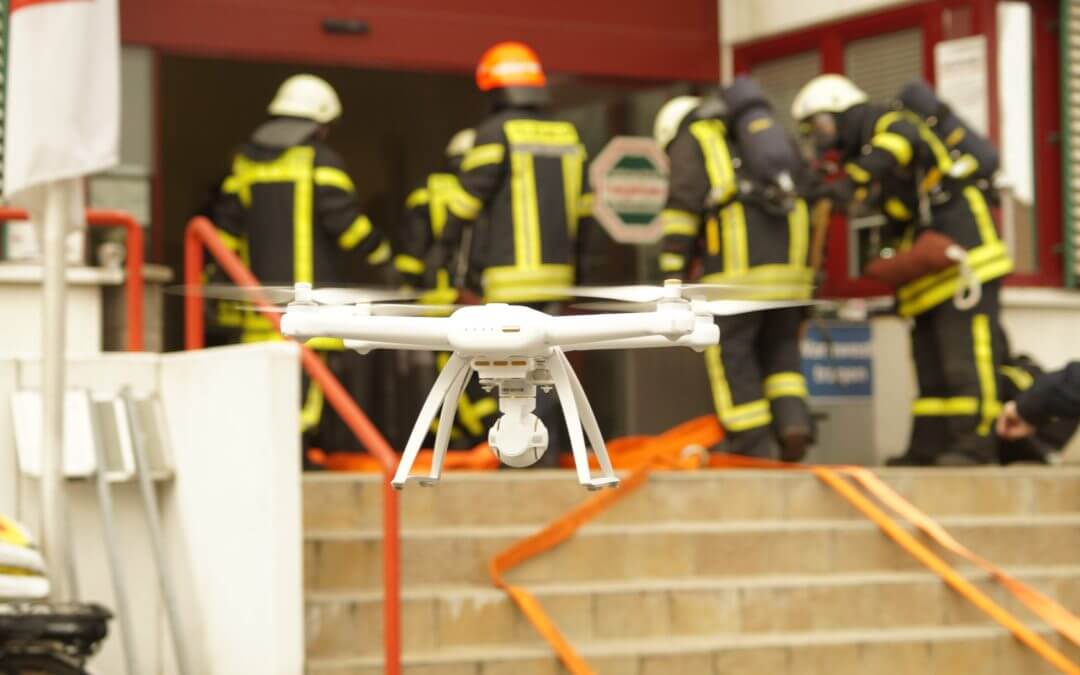FACT: Drones continue to be a popular choice for emergency response because of their versatility, sophistication and accessibility and more and more emergency-response professionals worldwide are using drones to tackle everything from natural disasters to live events.
- Scenario One: Events and venues
Popular sporting events are jumping onboard the drone technology bandwagon too.
For example, the trend of embracing drones in sports and training began in the NFL years ago. Recently, the head coach of Yellow Jackets football team, Texas, asked for a drone with a camera to shoot videos of the team’s practices from an elevated angle.
Meanwhile, a black drone buzzed around the goal posts, constantly adjusting for the best shot possible as the American River College football was underway. The drone is the latest tool the ARC football team is using to improve its game.
However, drones aren’t just used outside – they can effectively be used inside for crowd control, surveillance and detection efforts. Using thermal cameras and other tactical equipment, drones can safely be used indoors, even in chaotic and challenging settings.
- Scenario Two: Searching unknown areas
In a recent NUAIR demonstration, drones were used to search a pile of rubble that had been dumped on an old runway at the training facility to show how drones could quickly scan the remnants of downed buildings and miscellaneous debris to find important items.
Trainers showed officials how to scan the rubble pile using an infrared camera and gas-monitoring equipment.
Life-saving drones: 3 other real-life situations where drones are used
- In a real-life example, researchers from Delft University of Technology, Netherlands, recently experimented with a swarm of tiny drones equipped with optical sensors that can explore unknown environments completely by themselves and more efficiently than a large single drone.
- While, drones will help the Calcutta Municipal Corporation fight dengue. Deputy mayor, Atin Ghosh, says: “We will use the drone for several purposes. It will first fly over properties that our workers cannot access and the ones they suspect to have mosquito-breeding sites. If the drone finds water accumulated in these places, it will take samples of the water.”
- Drones are now going into the depths of the ocean too as the U.S. National Science Foundation (NSF) support David Chadwell’s ocean-going drones to help predict earthquakes. The NSF recently announced a $5.5 million grant for Chadwell’s team, which will be used to buy beacons for 16 seafloor sites and three drones to inspect them. This nearly doubles the scientists’ ability to predict earthquakes.
- Scenario Three: Natural disasters
Drones are becoming more commonplace in the wake of natural disasters.
Search and rescue operations use drones worldwide, for example, drones were deployed during Cyclone Idai in Mozambique and during numerous wildfires in California to track down important objects and to keep an eye out for people in distress.
Another example shows drones being used for firefighting and disaster relief. With high-resolution cameras to capture fire sites and an ability to carry up to 5kg rescue materials such as AEDs and lifebuoys, drones are a cost-effective, safe and fast way to reach areas which are hazardous to first responders.
- Scenario Four: Search and rescue
Lives are being saved every day as more and more drones take to the skies in search and rescue operations.
Recently drones were used to find a lost hiker in Ohio, the USA, to locate two cousins trapped on a mountainside in Iceland, and to locate a United Kingdom man who was thrown from his car during an accident.
Meanwhile, a 66-year-old woman who was reported missing for over 24 hours, was found safe and well by a drone operator with the Getchell Fire Department, who spotted her amidst blackberry bushes in Lake Stevens, Washington.
Each of these training scenarios highlights the power and versatility of drones. If you want to find ways to use drones for good in your organisation, reach out to Mirragin today for a consultation at admin@mirragin.com.au.
Listen to our podcast: For more information on drones for good, and how you can use them in your business, subscribe and listen to our podcast here

